
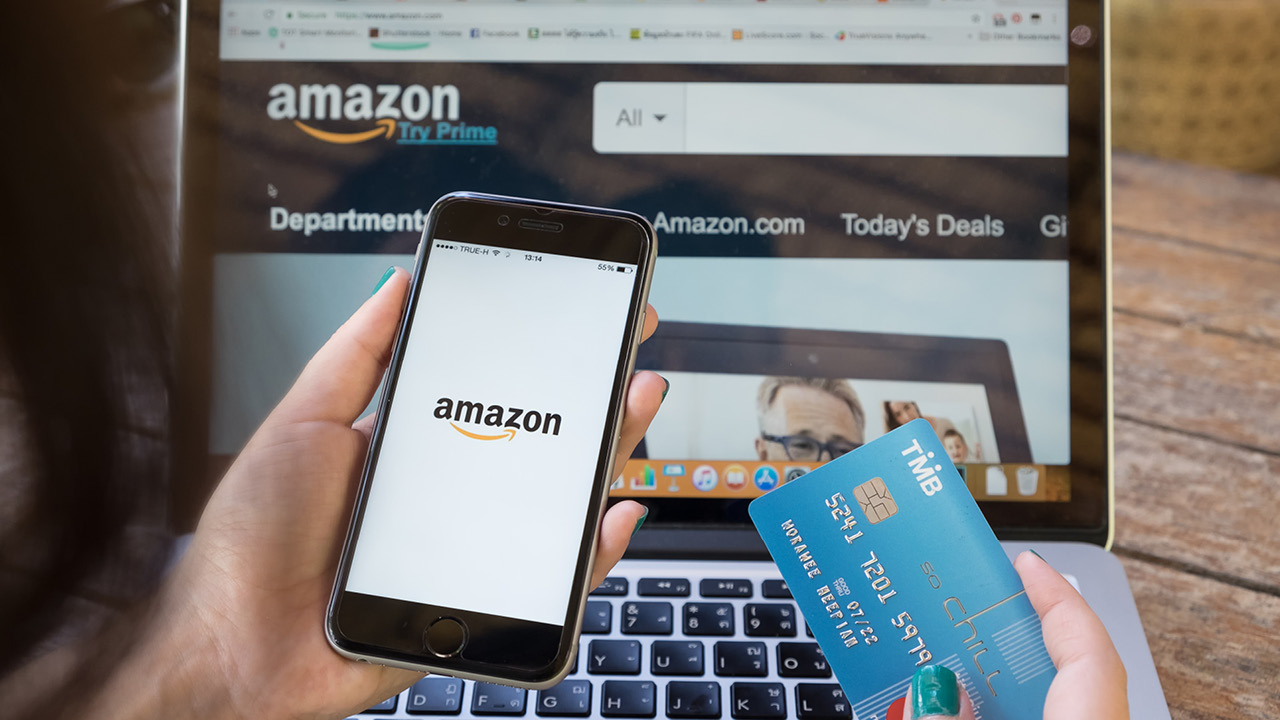
Do you know which keyword phrases to use when running ads for your titles on Amazon? What about the best time to run ads on Amazon?
When you need to optimize your titles on Amazon your success lies in knowing when to focus on organic search versus when to invest in keyword advertising. It’s hard to decide exactly which keywords to use and how to use them.
However, there is a framework for balancing your organic and paid Amazon efforts. Your ability to sell books on Amazon relies on knowing how your customers search for books.
Let’s get started.
20 years ago, Amazon was mainly a homepage with a little bit of search too. Spring forward to present day and Amazon is fast becoming a search engine environment. Discovery is about a lot more than just search but search is critical and drives visibility.
1) Search
2) Merchandising
3) Recommendations
4) Advertising
Amazon is becoming an increasingly crowded marketplace. Also, products on Amazon are discovered in places like Google, Goodreads, Facebook, Instagram (basically, the internet).
There are roughly 27 million books on Amazon and then there are all the other products. And, by the way, those 27 million books are being sold by various sellers, so there is a lot of noise compared to the old days.
We spoke in length about Amazon SEO in an earlier blog – How to Grow Your Online Book Sales Through Improved Amazon SEO & Keyword Advertising.
Here are a few highlights:
The Algorithm is an Evolving Feedback Loop
At the top there's supplier provided product information. For publishers, this is metadata. So, this is information you are giving. Basically, the stuff that winds up in the title management system, and ultimately winds up in ONIX, and it feeds over to Amazon and informs where Amazon will initially position your book.
At the bottom of the loop is consumer traffic or consumer behavior, however you want to think about it. And you can influence this, publishers can influence this, and marketers can influence this.
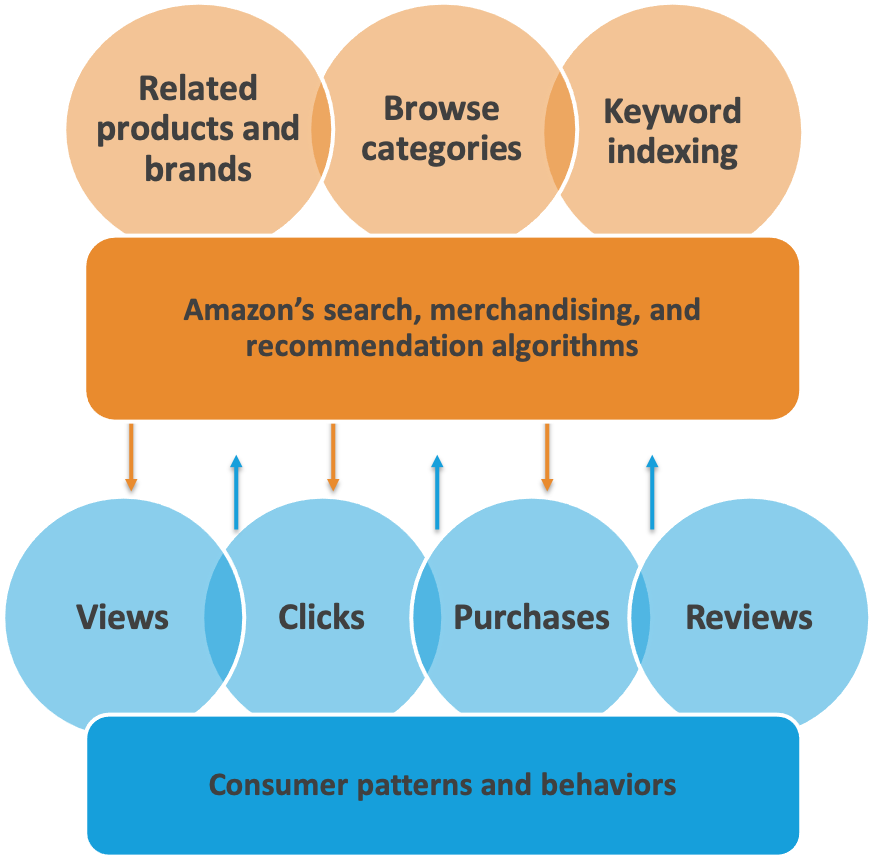
Traffic can be driven by ads, both within Amazon and off-Amazon. Behavior can be driven by price changes. Think of behavior as how customers are interacting — views, clicks, purchases and reviews.
Metadata and behavior are two things constantly playing with each other. What you've told Amazon about your products and how consumers are engaging with them, there's constant interaction going on.
You can think of the algorithm as "learning" how to position your titles in a way that gives them the best chance to sell, given their likelihood to sell. All factors combine to inform overall product visibility in search, in cross-selling, and in cross-recommendations.
The better the supplier provided information and the more virtuous the views - to clicks - to purchases - to reviews is, the higher up you're going to rank and the more visible your book's going to be.
Amazon is the one search engine that still allows for keywords to have a good deal of influence over how it positions your book and how it indexes your book. Amazon will then include the consumer behavior to re-index your book.
Keywords are the #1, pound for pound, most efficient way to:

At first input you get to tell Amazon how to position your book. You don’t get many opportunities to tell Amazon, "Please put my book here." And over time they're going to change it by behavior.
Rule #1: Think Like A Reader
Keywords are how readers look for and talk about books.
You know your books, but to get your keywords right you want to make sure you know what readers are saying and how they look for books. You can find keywords by looking at what search phrases consumers use when they're searching for books.
When customers write reviews, how do they describe your book? How do they describe similar titles? What categories, topics and genre labels do they apply to your books? Keywords are specific ways consumers describe titles. And they're giving you this information and it's available out there.
Remember that keywords should be designed to describe your book in ways that will resonate with your intended audiences, and to describe your audience in relation to that book.
Below is a great exercise when thinking about keywords in relation to your audience. Marrying your audience and your content is important to getting your keywords right.
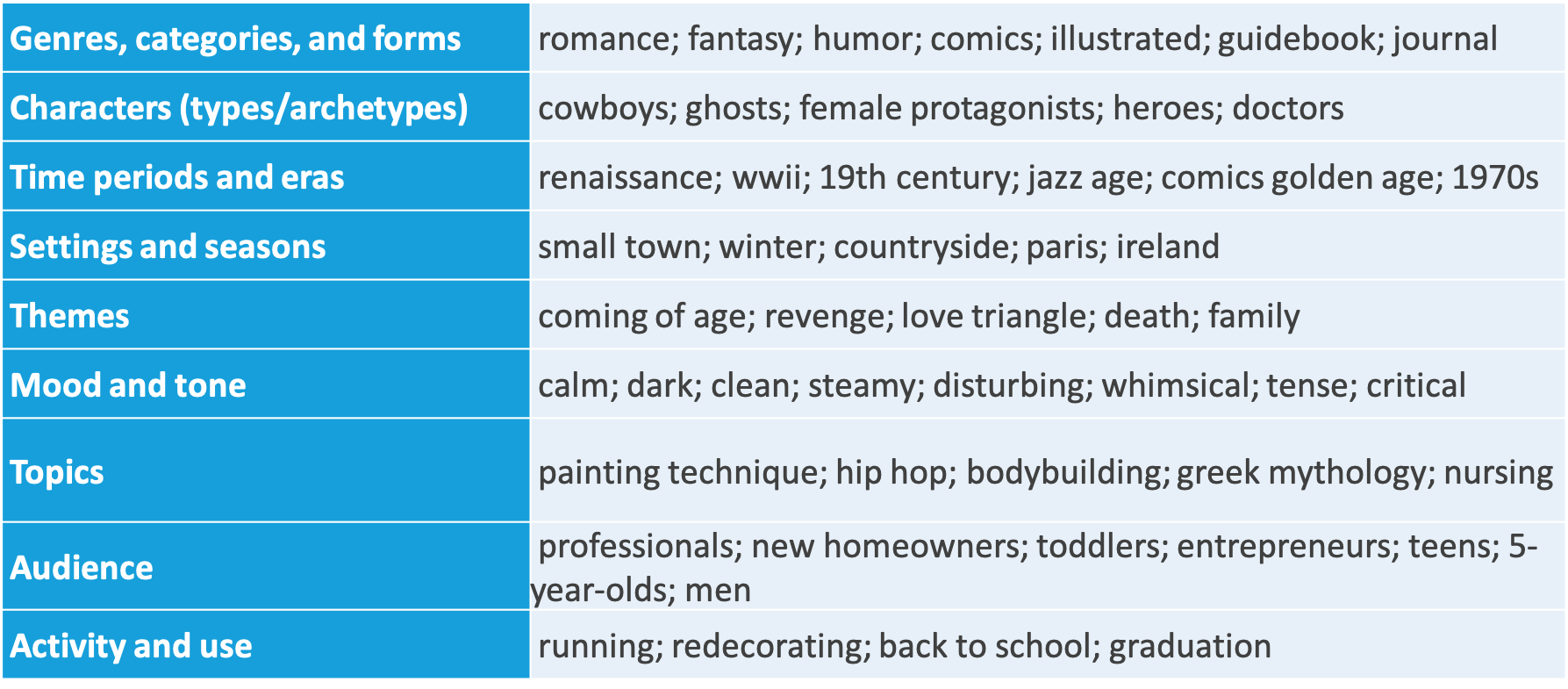
Keywords Reinforce the Customer Journey
Matching your audience and content keywords are important for fiction, commercial books, trade and just as important for professional, medical, higher ed, and K-12.
Getting these semantics right in the off-page keywords is equally important in places where the consumers can see them.
For example, descriptive copy and metadata that is consumer-facing — headlines, quotes, datapoints, etc. What you want to try to do is create alignment when someone's searching for a specific topic.
You want this person to see the relevant terms and phrases they would expect to see, to say, "Ah yes, this is the woodworking guide that I'm looking for in order to build the bench that I'm thinking about building this summer." That's going to cause them to convert to sale. If they don't see it when they get there, it isn't going to be as potent. So, it's about off-page and on-page keywords.
Think of this as having dialogue with your potential buyers online. Frankly, this is the only way you can, outside of advertising. If somebody's searching on Amazon, or browsing in Amazon, they only have the information that you provide them there, to know what your book is about and if it's right for them.
It’s important to balance these four boxes when considering your keywords.

Consumer Intent & Relevance
Volume & Difficulty
· How many people are searching for this term?
· Can I rank organically or pay for placement?
At the end of the day, these combine into your likelihood of conversion.
If you can rank for a high-volume, high-intent keyword you have the perfect book and you're going to see a lot of conversions and a high ratio of views to conversion.
Most books don't fall into that category. When you've got one of those, the wind is at your back and all things are going to work.
Mix of Volume & Intent
Often, you're going to have something that looks a little bit more like this.
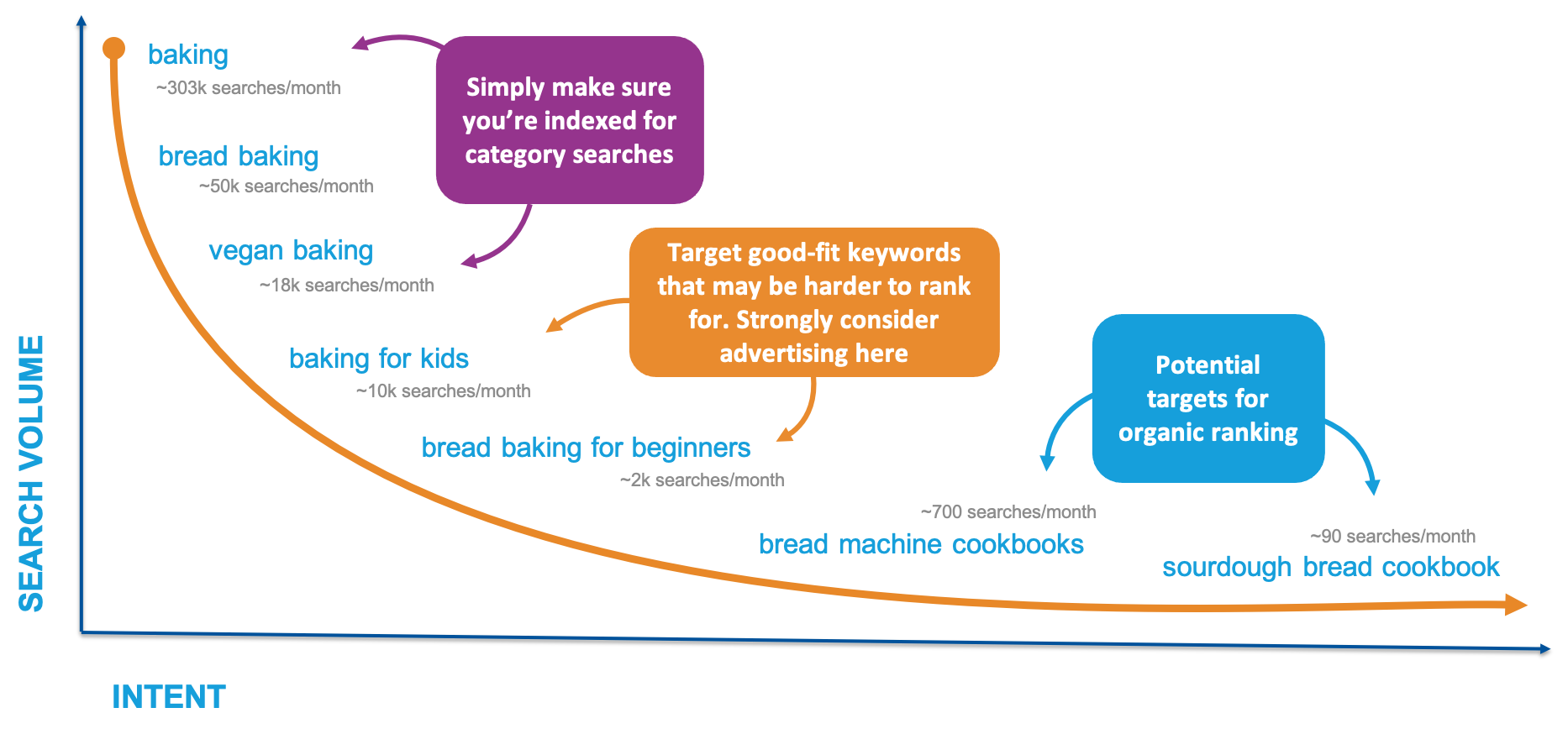
You’re looking at the intent and volume curve of a sourdough bread cookbook. If you start at the top left, you’ll see “baking.”
The sourdough bread cookbook is a baking book, specifically a bread baking book, with vegan recipes.
You want to make sure you're indexed for those searches and you will be, based on your BISAC categories and title.
Baking is one of the keywords you would start with here. There are 300,000 searches a month for “baking”, and there are some killer books in that category. It would be tough ranking number one or two in that category, so you’ll want to move down the curve.
In the middle, you have baking for kids, bread baking for beginners, and bread machine cookbooks. These are good fit keywords for your book. Your book is not perfectly relevant, but you it is relevant.
Start by targeting these keywords for organic ranking, but these are great candidates for advertising too. Because, by advertising, you can win for those phrases. You can increase the number of clicks, increase the number of page views, and hopefully increase the conversion.
From here, move all the way down to extremely high intent. Someone who does a search for “sourdough bread cookbook” knows what she wants.
There just aren't many of her out there. There are 90 searches for “sourdough bread cookbook” a month and you're going to rank well for that.
If you have a good cookbook with a lot of reviews, you're in good shape. And these are good targets for organic ranking. In other words, get these terms into your off-page keywords.
Your focus is to optimize across the curve for both paid and organic methods in your keyword strategy.
If you’re competing with 20,000 other books for a search term, consider putting money behind your title for that category on Amazon. Over time, if your driving sales around that keyword, you can increase your likelihood of ranking organically for it as well and eventually, not having to pay for those clicks.
When to Use Keyword Advertising
3 Steps to Knowing You’re Ready
Start by asking yourself these three questions.
1. Do I have a clear audience and a clear goal?
For example, do you know there are people looking for how to catch brown trout with a fly rod?
If you do and you have the book for them, you can target them, advertise and ensure that your book begins to appear in front of them. The advantage is it's targetable, controllable, and measurable.
2. Can I reach my audience without advertising?
Another form of this question is, can I rank organically? You want to always ask yourself this question.
If you think you can, advertising doesn't necessarily make sense. If you already rank on the first page for a given book, like funny fly-fishing essays, you’re going to do okay for that term on your own.
3. Can I reach and convert that audience profitably with advertising?
Just because the first two things you may say, "Yes, I've got a clear audience in mind. No, I can't reach them without advertising," doesn’t imply you can advertise effectively to them.
Successful ads have a lot to do with the cost of the ads. You need to know your profitability for a title then tac on the cost of selling the books.
Then you need to determine if the time and effort of creating and running an ad is worth it. You want to be intentional about when you run ads. Great ads can be a huge lift when you've got the right book and you have the time to advertise.
Amazon Advertising Walk-Through
Ad Types
Amazon has several different ad types, but the focus today is on sponsored products and sponsored brands.
These enable keyword targeting and put your products in front of consumers who are searching for relevant terms and put you on the search result pages for the keyword terms that you select.
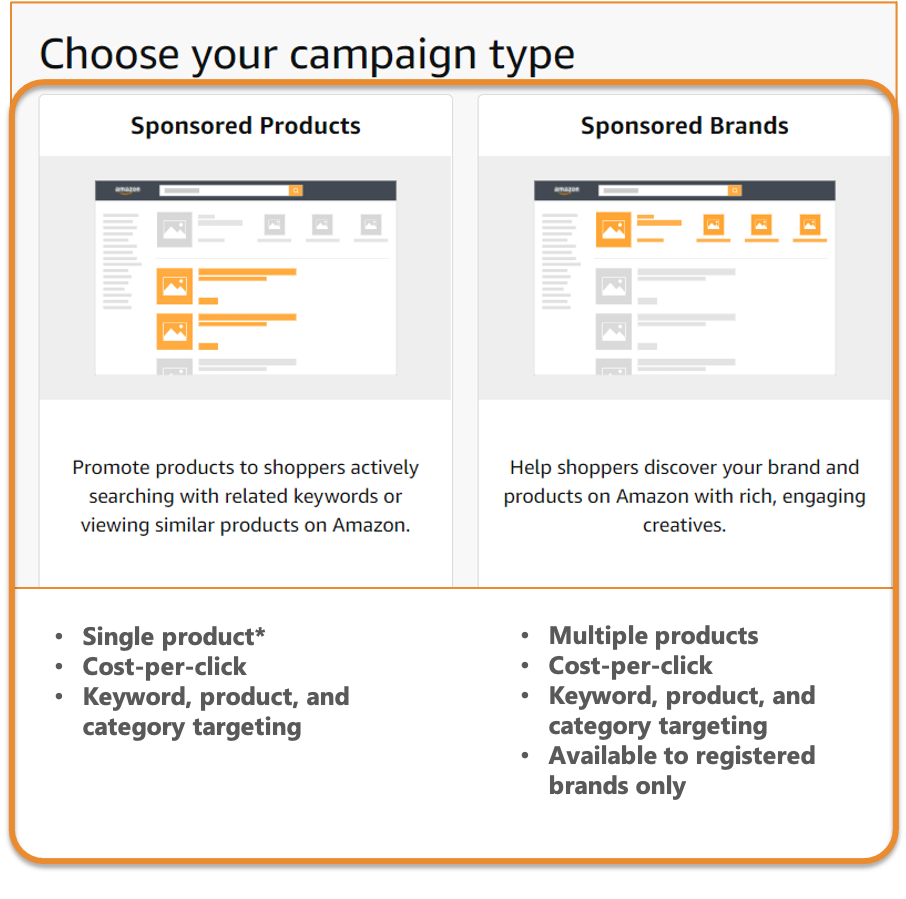
Sponsored products are individual items, and they appear in the search results. They look like organic results, but they have a sponsored tag.
Sponsored brand units allow you to feature multiple products and appear very often as a banner on the top of the search results. It’s a great unit if you've got multiple books, maybe in a series or around a related topic, and you would like to try to drive traffic to all of them.
Each of these are cost-per-click units, so you only pay when somebody clicks. This is an affordable way to get more views and get more product recognition. Then you can start to monitor how people are interacting with your ad.
Setting Up Your Campaign
This example follows the process of setting up an Amazon sponsored product ad:

- You’re going to pick one book, or multiple books that you want to advertise but they will each be advertised as individual units against the same keyword set.
- You’ll select manual targeting because you want to use good keywords.
- Amazon does offer automatic targeting, where they will use their suggested keywords and auto-optimize around those. We have seen that work in some cases and not work in others. We recommend doing manual targeting but if you don't have any keywords to start with, use Amazon's suggestions but apply that next layer of filtering to limit being too broad.

- Select keyword targeting. This will allow you to put in specific keywords that you want to advertise.
Side Note: Amazon offers the ability to advertise for broad, phrase and exact matches.
1. Exact match: ranking for searches with only the terms you provide.
2. Phrase match: ranking for all the words in your phrase, plus or minus a few.
3. Broad match: ranking for one or more of the words, but not necessarily all of them are included in the search term.
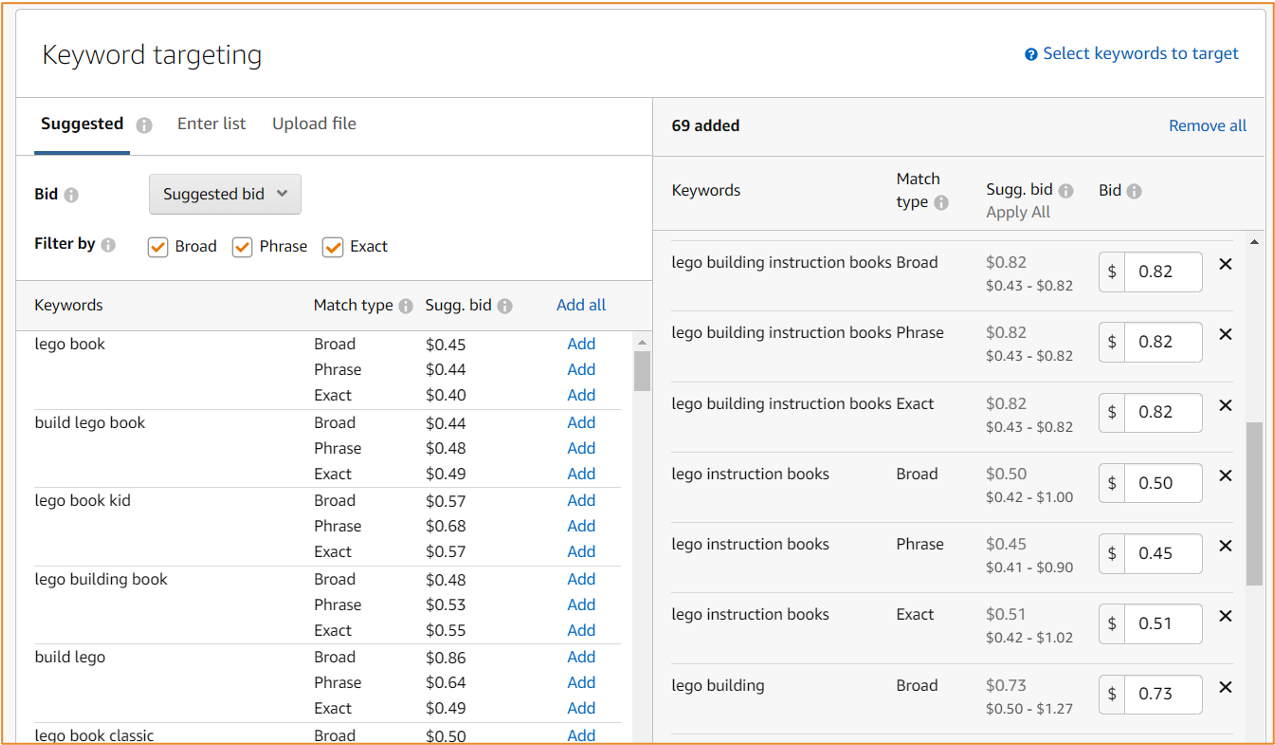
- Enable each match type and have your book run sponsored ads across each of those types. You're not bidding against yourself, so there's no harm in that. And then watch how each of those types perform to see which one is best for you. The one thing to look out for with this is, very often, some of the broad match types can be expensive. So, if there is something that is $1 or more, you might want to disable that.
- Use Amazon suggested bid just to get started. It’s easy, and then you can see how that plays over time. If your ad is converting well, you can then start to decrease your bid because your ad is relevant for that term and Amazon wants to place your book, because they want to sell more of your books, too.
Monitoring Performance
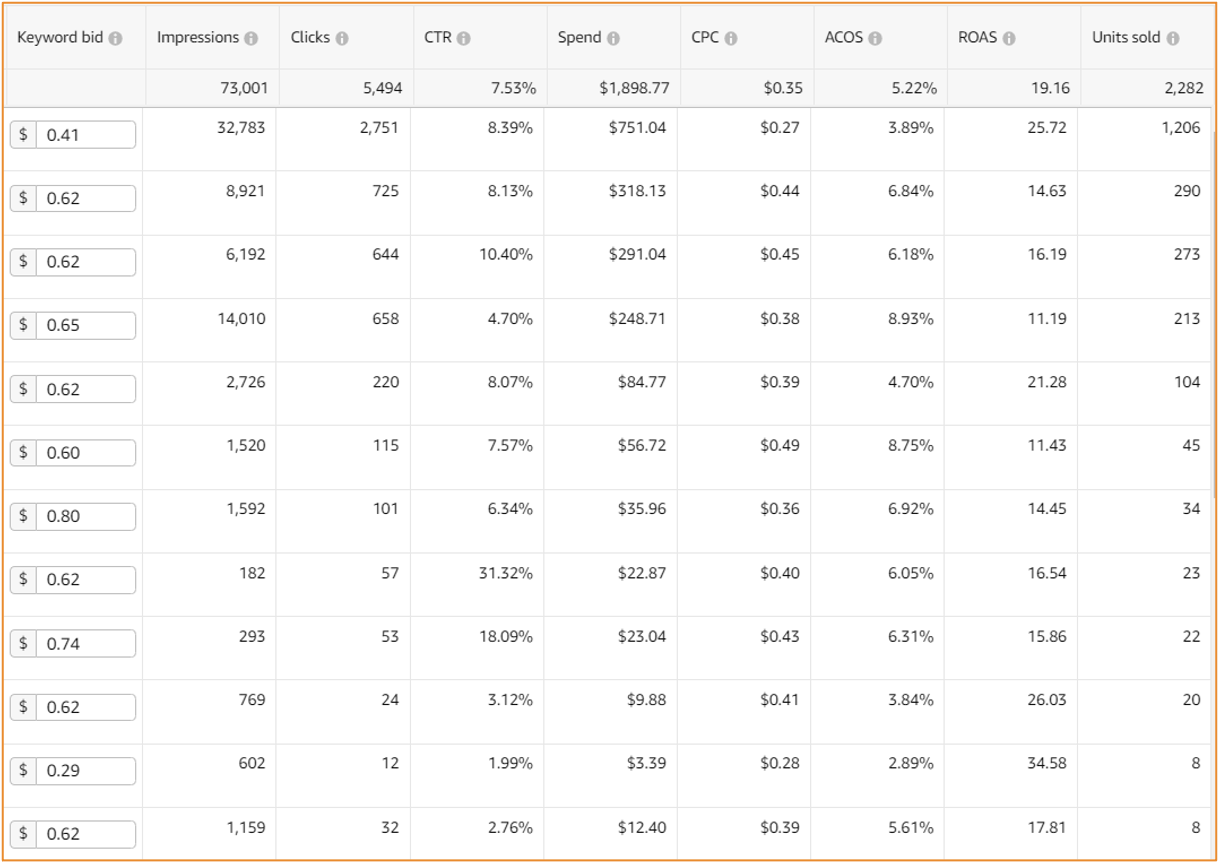
- Once you get the ad running, you want to monitor performance. There are a few metrics you’ll want to watch while running Amazon ads.
o Impressions: the total number of times your ad was viewed by consumers on Amazon.
o Clicks: the amount of those impressions somebody clicked through on. And that will translate into your click-through rate.
o Spend: how much you’re paying overall. And how much you’re paying per click, that's the cost-per-click. You can get a granular sense of how much you’re paying each time somebody clicks on one of your ads. And how much you’re paying for each of those keywords. If some keywords are more expensive and they are not translating into units sold, that would be a good one to turn off. You're looking for the ones that are less expensive and are converting into units sold. That's where these next two metrics come in.
o Advertising cost of sale: the percentage of the dollar value that you're earning back from what you have put in.
o Return on ad spend (ROAS): this is how much you are getting back in total sales, for every dollar you spend. Keep a look at your other sales data to look for knock-on effects. We talked about paid advertising supporting your organic efforts. Very often, if you have successful ads, you will also start to see your book improve in organic search and drive more sales, even when you’re not the one driving those clicks.
For sponsored products within the book category, a good CPC, is about 20 cents and a click-through rate of .24%, which is low. But the return on ad spends, which is the metric you want to watch closely, is benchmarked at $2.83. You want to see a $2 to $3 return on your ads, and the higher the better. You're optimizing to beat those marks.
.png)